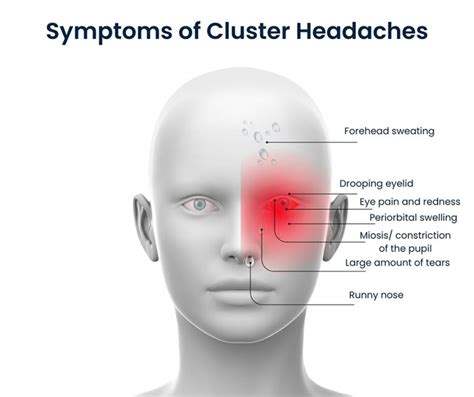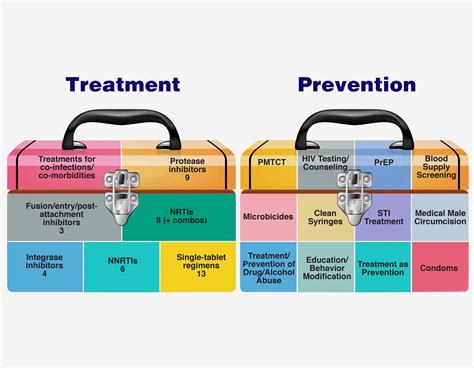Intro
Discover effective Cluster Headaches Treatment Options, including preventive medications, lifestyle changes, and alternative therapies, to alleviate debilitating cluster headache symptoms and improve quality of life.
Cluster headaches are a type of headache disorder characterized by severe, recurring headaches that occur in cyclical patterns or clusters. These headaches are often described as the most painful type of headache, even more so than migraines. The pain is typically localized to one side of the head, often around the eye, and can be accompanied by other symptoms such as nasal congestion, tearing, and sweating. Given the debilitating nature of cluster headaches, finding effective treatment options is crucial for managing symptoms and improving quality of life.
Understanding cluster headaches is the first step towards managing them. Unlike other types of headaches, cluster headaches have a distinct pattern and set of symptoms. They can be episodic, occurring in periods or clusters that can last from weeks to months, followed by remission periods where the headaches stop. In some cases, cluster headaches can be chronic, occurring regularly without prolonged periods of remission. The unpredictability and severity of these headaches make treatment challenging, necessitating a comprehensive approach that may include lifestyle modifications, preventive medications, and acute treatments for when headaches occur.
The importance of treating cluster headaches cannot be overstated. Beyond the immediate goal of reducing pain, effective treatment can help prevent future episodes, improve daily functioning, and enhance overall well-being. Treatment plans are often tailored to the individual, taking into account the frequency, severity, and pattern of their headaches, as well as any other health conditions they may have. This personalized approach is critical for maximizing the effectiveness of treatments and minimizing side effects. With the right combination of therapies, individuals with cluster headaches can experience significant relief and an improvement in their quality of life.
Overview of Cluster Headaches

Preventive Treatment Options

Medications for Prevention
Preventive medications are typically started at the beginning of a cluster period and continued until the period ends. The choice of medication depends on several factors, including the patient's medical history, the severity of their headaches, and any side effects they may experience. It's essential to work closely with a healthcare provider to find the right medication and dosage, as this can significantly impact the effectiveness of the treatment.Acute Treatment Options

Emerging Treatments
Research into cluster headaches is ongoing, and several emerging treatments show promise. These include neuromodulation techniques such as transcutaneous vagus nerve stimulation and transcranial magnetic stimulation, which can help modulate pain pathways in the brain. Additionally, onabotulinumtoxinA (Botox) injections have been explored for their potential to prevent cluster headaches, although more research is needed to fully understand their effectiveness.Lifestyle Modifications

Nutritional Considerations
While there is limited evidence on the specific dietary changes that can help manage cluster headaches, a balanced diet rich in fruits, vegetables, whole grains, and lean proteins can help overall health and potentially reduce headache frequency. Some individuals may find that certain foods trigger their headaches, and keeping a food diary can help identify these triggers.Alternative Therapies

Psychotherapy and Support
Given the significant impact cluster headaches can have on daily life, psychological support is an important aspect of treatment. Psychotherapy can help individuals cope with the stress and emotional challenges associated with chronic pain. Support groups, whether in-person or online, can also provide a sense of community and understanding, which is invaluable for managing the condition.Future Directions in Treatment

Personalized Medicine
The future of cluster headache treatment may also involve personalized medicine, where treatments are tailored to an individual's unique genetic, environmental, and lifestyle factors. This approach could lead to more effective treatments with fewer side effects, significantly improving the quality of life for those affected by cluster headaches.What are the most common triggers for cluster headaches?
+Common triggers for cluster headaches include changes in sleep patterns, alcohol consumption, and certain foods. However, triggers can vary widely among individuals.
How effective is oxygen therapy for acute cluster headaches?
+Oxygen therapy is highly effective for acute cluster headaches, providing relief within 15-20 minutes in many cases. It is considered a first-line treatment for acute attacks.
Can lifestyle modifications alone prevent cluster headaches?
+While lifestyle modifications can help reduce the frequency and severity of cluster headaches, they are often used in conjunction with preventive medications for maximum effect. In some cases, lifestyle changes alone may not be sufficient to prevent headaches.
In conclusion, managing cluster headaches requires a multifaceted approach that includes preventive treatments, acute therapies, lifestyle modifications, and alternative therapies. By working closely with healthcare providers and staying informed about the latest developments in treatment, individuals with cluster headaches can find relief and improve their quality of life. We invite readers to share their experiences and ask questions about cluster headaches, contributing to a community of support and understanding for those affected by this condition.
